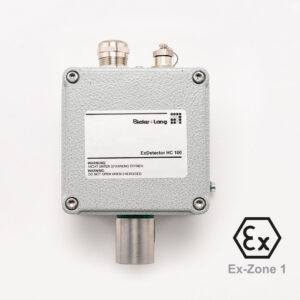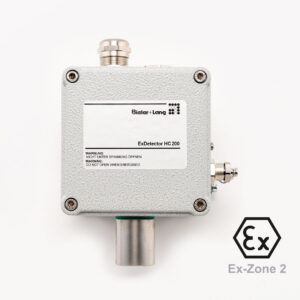Trichloroethene (C2HCl3) – Invisible danger in the air
Gas detectors provide reliable protection against health risks
Trichloroethene (TCE) – also known as trichloroethylene – is a colorless, slightly volatile and sweet-smelling liquid that is used in many industrial processes. TCE is used particularly frequently in metalworking, plastics production, surface cleaning and the remediation of contaminated sites.
However, despite its effectiveness as a solvent, trichloroethene poses considerable health risks – particularly due to the formation of toxic vapors at room temperature.
TCE: Carcinogenic, nerve-damaging and difficult to perceive
Even at low concentrations, trichloroethene can be absorbed via the respiratory tract and has an irritating, anaesthetic and, with chronic exposure, carcinogenic effect. It also damages the central nervous system, liver and kidneys – and is suspected of altering genetic material.
Toxicological key figures (Germany):
- AGW (occupational exposure limit value): 10 ppm (TRGS 900)
- MAK value: 10 ppm (≈55 mg/m³)
- Odor threshold: 20-30 ppm → Danger: perception often too late
- Long-term risks: Nerve damage, liver toxicity, cancer risk (IARC Group 1)
Particularly treacherous: TCE is colorless and difficult to detect – it can accumulate unnoticed in poorly ventilated rooms.
Fire hazard due to TCE vapors – Explosion risk in certain environments
Although trichloroethene is not self-igniting as a liquid, it can become flammable or even explosive in vapor-air mixtures. This applies in particular to closed systems with sparks, open flames or hot surfaces.
Explosion limits:
- LEL (lower explosion limit): approx. 8 % vol.
- OEG (upper explosion limit): approx. 10.5 % vol.
Critical e.g. in cleaning systems, tanks, evaporators or production lines
Gas detectors for trichloroethene – Precise detection for maximum safety
As trichloroethene is barely perceptible and can be harmful to health even in small quantities, the use of modern gas warning technology is essential for safe working.
Our TCE gas detectors offer:
- Sensitive detection from a few ppm
- 24/7 monitoring in industrial, warehouse and laboratory areas
- Audible & visual alarms when limit values are exceeded
- Interfaces to ventilation and emergency shutdowns
- Special sensors for chlorinated hydrocarbons
Typical areas of application for TCE gas measurement
- Metal degreasing & electroplating
- Chemical and pharmaceutical industry
- Plastics processing
- Contaminated site remediation & soil remediation
- Solvent storage & hazardous substance tanks
- Test laboratories & research facilities
Safety through technology – protecting health and operations
The gas detection systems for trichloroethene from Bieler+Lang reliably detect even the lowest concentrations – before they become a hazard. This enables legally compliant, safe operation in sensitive working environments.
The following gas sensors and systems from Bieler+Lang can detect trichloroethene
We will be happy to advise you on the selection of suitable detectors and the corresponding evaluation devices for your individual application.


